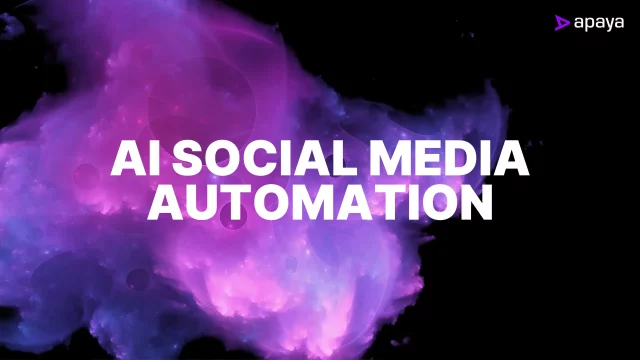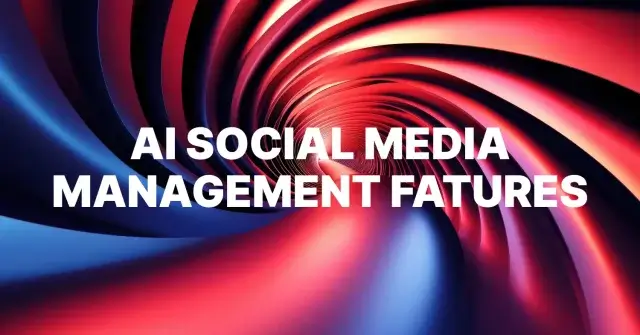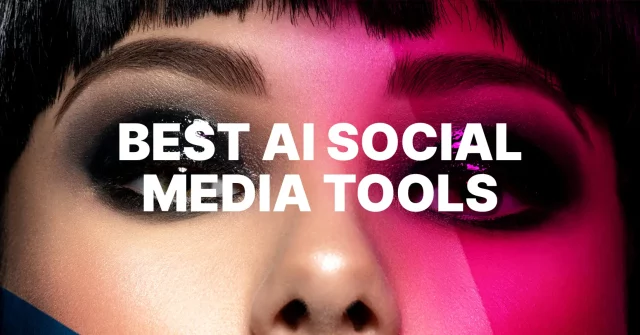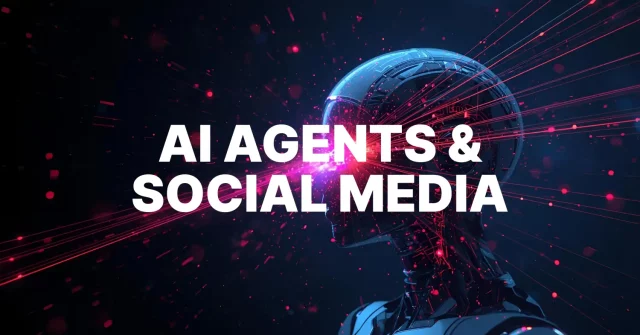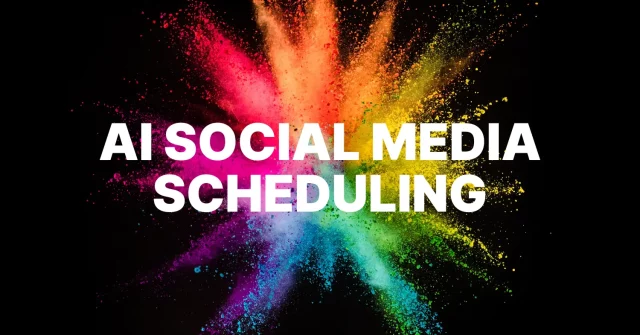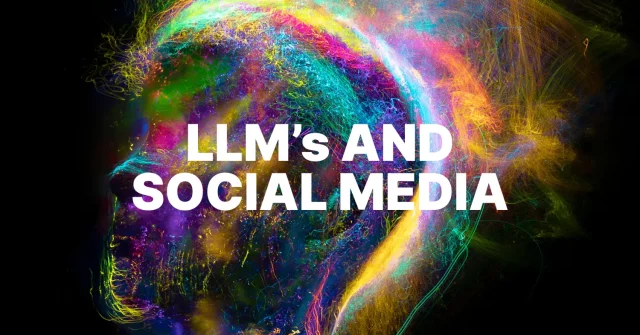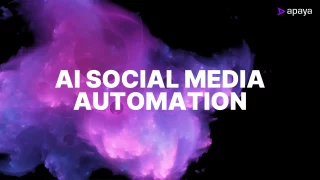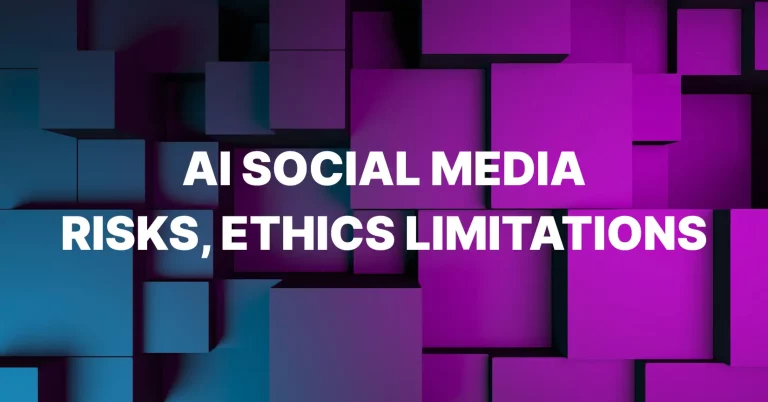
AI in Social Media: Risks, Ethics, and Limitations
Written by: Tim Eisenhauer
Last updated:

The real risks of AI social media (and how to avoid them).
The Three Main Risks:
- Authenticity Risk: Your brand sounds like a robot reading Wikipedia
- Ethical Risk: Replacing human creativity with soulless automation
- Technical Risk: AI only knows the past, not what’s happening now
The Solutions:
- Use AI that learns YOUR brand, not generic templates
- Automate busywork, not strategy and creativity
- Combine AI generation with real-time monitoring
Most businesses using AI for social media are doing it wrong. They’re using generic tools that create generic content. The problem isn’t AI—it’s bad implementation.
“I’m sorry Dave, I’m afraid I can’t do that.”
– HAL 9000, 2001: A Space Odyssey
That quote haunts me every time I see another LinkedIn post that starts with “In today’s fast-paced digital landscape…”
You know the ones. They read like a robot tried to impersonate a middle manager who just discovered buzzwords. Three paragraphs of nothing, wrapped in corporate speak, signed off with “Thoughts?”
I’ll tell you my thoughts: We’ve created a monster, and it’s boring everyone to death.
Why most AI social media content feels “inauthentic” (And why it’s not the AI’s fault).
Last month, I ran an experiment. I subscribed to 10 company newsletters that bragged about their “AI-powered content.” Within a week, I could predict their posts before opening them. Every single one followed the same formula:
“🚀 Excited to announce…”
“💡 Did you know that 73% of…”
“🎯 Here are 5 ways to optimize your…”
It was like watching 10 people read from the same teleprompter. The AI wasn’t creating content—it was photocopying mediocrity at scale.
But here’s the thing that nobody wants to admit: The AI isn’t the problem. We are.
When you type “write a social media post about productivity” into ChatGPT, you’re essentially asking a brilliant intern who’s never met you, doesn’t know your business, and has no idea what you did yesterday to represent your brand. Of course it sounds generic. You gave it nothing to work with.
Most AI tools are just pretty wrappers around the same generic prompts. They’re asking AI to create something from nothing, then acting surprised when that something is nothing special.
The risk of inauthenticity: Why AI-generated content sounds generic.
Let me tell you exactly why your AI content sounds like it was written by a committee of robots who learned English from corporate handbooks.
The Generic Prompt Problem:
- You: “Write a post about customer service”
- AI: Generates the 10,000th version of “Customer service is important”
- Your audience: Scrolls past without reading
This happens because tools like ChatGPT have no brand memory. They don’t know:
- What you sell
- Who buys it
- Why they care
- What you posted yesterday
- Your brand voice
- Your industry jargon
When you feed it a generic command, it gives you a generic answer. It’s like asking a stranger to give a speech at your wedding. They might say nice things, but it won’t sound like someone who actually knows you.
I watched a competitor spend $3,000 a month on an AI tool that was basically ChatGPT with a prettier interface. Every post read like it was written by the same boring robot. Their audience could smell the inauthenticity from a mile away.
How we solve it: The “Brand Framework” ditches the prompt.
Here’s what works: Stop starting with prompts. Start with your actual business.
When Apaya begins working with your brand, it doesn’t ask you to write prompts. It asks for your website URL. Then it does something—it learns about your business.
The AI crawls your website:
- Your about page (to understand your story)
- Your product descriptions (to know what you sell)
- Your blog posts (to learn your voice)
- Your team page (to understand your culture)
- Your testimonials (to see how customers talk about you)
From this, it builds a comprehensive Brand Framework that includes:
- Your unique tone of voice
- Your specific value propositions
- Your target audience segments
- Your industry terminology
- Your brand personality traits
The result? Content that sounds authentic because it’s based on YOUR actual brand DNA, not some generic template. This is how modern LLMs create authentic content—by learning from your real materials, not from thin air.
The ethical question: Are you replacing a creative team or just robotic tasks?
I fired my social media agency in 2023. Not because I’m heartless, but because I realized I was paying $5,000 a month for someone to do work a robot should be doing.
Here’s what that $5,000 bought me:
- Monday: One-hour call to discuss “content strategy” (aka what to post)
- Tuesday: They’d send drafts that sounded nothing like my brand
- Wednesday: I’d rewrite everything
- Thursday: They’d schedule the posts I rewrote
- Friday: They’d send me a report showing my posts got 12 likes
I wasn’t paying for creativity. I was paying for expensive button-clicking.
The uncomfortable truth about social media jobs.
Most social media work is already robotic:
- Resizing the same image for 5 platforms
- Rewriting the same caption to fit character limits
- Scheduling posts at “optimal times”
- Adding hashtags from a spreadsheet (are they even relevant anymore?)
- Creating “variety” by rotating through 7 post templates
One social media manager told me she spent 30 hours a week on “content creation.” When I asked her to break it down:
- 10 hours finding ideas (scrolling through competitors’ feeds)
- 8 hours in Canva (moving elements around templates)
- 6 hours writing captions (and rewriting for each platform)
- 4 hours scheduling
- 2 hours on “strategy” (aka panic-Googling “social media trends 2025”)
That’s not a creative job. That’s a human pretending to be software.
How we solve it: Automate the busywork, not the strategy.
Apaya isn’t designed to replace creative humans. It’s designed to replace human robots. Its designed to create your entire social media strategy using AI.
The system handles the 90% of social media that’s pure grunt work:
- Generating first drafts
- Creating on-brand graphics
- Adapting content for each platform (if fact this isnt even really that relevant anymore because you can post the same size images to all platforms without resizing. They want your content no matter what size!)
- Scheduling at optimal times
- Tracking basic performance
This liberates your human marketer (even if that marketer is you) to do actual creative work:
- Responding to customer comments with personality
- Jumping on trending topics in real-time
- Building relationships with influencers
- Creating campaign strategies
- Being actually social on social media
Autonomous AI agents handle the repetitive tasks, freeing humans to be human.
The ethical stance is simple: We’re not replacing creative humans. We’re eliminating the robotic tasks that were slowly killing their souls. Your social media manager shouldn’t be a “content factory.” They should be a creative director.
The technical limitation: AI only knows the past, not the present.
Here’s the dirty secret about every AI model: They’re time capsules, not time machines.
GPT-5 doesn’t know what happened yesterday. Claude doesn’t know your competitor just launched a new product. No AI knows about the Twitter drama happening right now in your industry (excep maybe Grok).
This is why most AI content feels “canned”—it’s an echo of what was already said, not a response to what’s happening now. It’s like trying to have a conversation with someone who stopped listening three years ago.
I learned this the hard way when my AI-generated post congratulated a company on their IPO… three days after the IPO was cancelled. The AI was working from old data. My brand looked like it was run by someone in a coma.
The echo chamber problem.
When AI only knows the past, you get:
- Outdated references
- Missed opportunities
- Tone-deaf responses
- Generic observations
- Zero competitive advantage
Your competitors are talking about what’s happening today. You’re talking about what happened last year. Guess who wins that battle?
How we solve it: Consistent authority building while you handle the timely stuff.
Here’s the truth: AI can’t know what happened five minutes ago. It can’t jump on breaking news. It can’t respond to your competitor’s announcement from this morning.
But here’s what it CAN do: Keep your feed consistently active with authority-building content while you focus on the real-time opportunities.
The AI Brain (What We Actually Do):
Apaya’s AI Brain learns your brand and generates consistent, evergreen content:
- Authority-building posts that establish expertise
- Problem/solution content that addresses customer pain points
- Educational content that provides value
- Brand awareness posts that keep you visible
- Product highlights that maintain sales momentum
This content keeps your feed active 24/7/365. No gaps. No dead zones. No “sorry we’ve been quiet” posts.
The Human Brain (What You Still Do):
While Apaya handles the foundation, you’re free to:
- Jump on trending topics when they matter
- Respond to competitor moves
- Engage with breaking industry news
- Have real conversations with customers
- Add timely commentary to current events
Think of it like this: Apaya is your consistent drummer keeping the beat, while you’re the lead guitarist who can riff when inspiration strikes.
The Real Benefit:
Most businesses post nothing because they’re waiting for the “perfect timely moment.” They’re so focused on being relevant that they become invisible.
With Apaya handling your baseline presence, you can actually afford to be selective about real-time engagement. Your feed stays active whether you’re watching Twitter or not.
A client told me last week: “I used to stress about missing trends. Now my feed runs itself, and when I DO see an opportunity, I have the time and energy to actually capitalize on it.”
That’s the reality: We’re not trying to predict the future or monitor the present. We’re making sure you have a consistent, professional presence so you can focus on the moments that actually matter.
Our AI scheduling system ensures you’re always visible, even when you’re not actively posting.
Stop fearing AI and start demanding better tools.
I’ve spent the last two years watching businesses make the same mistake: They’re afraid of AI for all the wrong reasons.
- They worry AI will make them sound robotic—then use tools that guarantee it.
- They worry about ethics—then keep humans doing robot work.
- They worry about relevance—then use systems that can’t see the present.
The fear of AI is valid, but it’s pointed at the wrong target. You shouldn’t fear AI. You should fear bad AI. You should fear generic tools that create generic content for generic audiences.
Here’s what you should actually demand from AI social media tools:
- For authenticity: Tools that learn your actual brand from your actual content. Not prompt libraries. Not templates. Your website, your voice, your business. Build a real Brand Framework, not just another ChatGPT wrapper.
- For ethics: Systems that automate the grunt work to free up human creativity. Your team shouldn’t be resizing images—they should be building relationships. Calculate the real ROI of human time versus automation.
- For relevance: Platforms that combine consistent brand voice with real-time monitoring. Be authentic AND timely. Be consistent AND responsive.
The future of marketing isn’t about IF you’ll use AI. Every one of your competitors is already using it. The question is whether you’ll use AI that makes you sound like everyone else, or AI that actually learned to sound like you.
Most businesses are using AI like it’s 1999—generic, clunky, obvious. The ones winning are using AI like it’s 2025—authentic, intelligent, invisible.
Your audience can’t tell you’re using AI. They just know your content got better, your posting got consistent, and you’re somehow everywhere at once.
That’s not artificial intelligence replacing human intelligence. That’s artificial intelligence amplifying human intelligence. And that’s the only kind worth using.
Start your free trial and hear the Apaya difference—no generic robots, just your brand at scale.
—
If you’re tired of AI that sounds like it was written by a committee of robots, you might like my book, because I spent 300 pages raging against corporate buzzword bingo.
